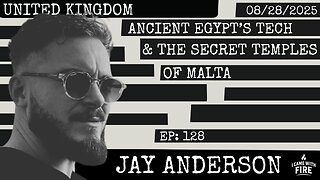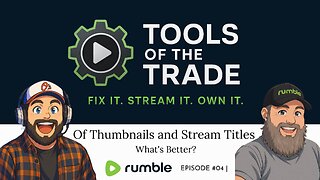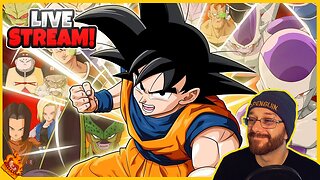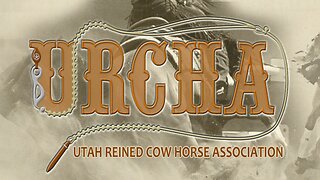Premium Only Content

Mortgage Loans Which is best for you
There are several types of mortgages available to homebuyers, each with its own set of features, benefits, and eligibility criteria. Here are the most common types of mortgages and how they work:
Fixed-Rate Mortgage (FRM):
How it works: With a fixed-rate mortgage, the interest rate remains constant throughout the life of the loan, allowing borrowers to have predictable monthly payments.
Benefits: Provides stability and predictability, making it easier to budget for housing expenses. Offers protection against rising interest rates.
Considerations: Initial interest rates may be higher than adjustable-rate mortgages (ARMs), and borrowers may miss out on potential savings if interest rates decline.
Adjustable-Rate Mortgage (ARM):
How it works: An adjustable-rate mortgage has an interest rate that adjusts periodically, typically after an initial fixed-rate period. The interest rate is tied to a benchmark index, such as the prime rate or LIBOR.
Benefits: Initial interest rates are often lower than fixed-rate mortgages, resulting in lower initial monthly payments. Borrowers may benefit from falling interest rates if they plan to sell or refinance before the rate adjusts.
Considerations: Monthly payments can increase significantly after the initial fixed-rate period, making budgeting more challenging. Borrowers may be exposed to interest rate risk if rates rise.
FHA Loan:
How it works: FHA loans are insured by the Federal Housing Administration and are designed to help low- to moderate-income borrowers qualify for home financing with lower down payment requirements and more flexible credit criteria.
Benefits: Lower down payment requirements (as low as 3.5% of the purchase price), more lenient credit requirements, and competitive interest rates.
Considerations: Borrowers are required to pay upfront and annual mortgage insurance premiums, increasing the overall cost of the loan. Loan limits may apply depending on the borrower's location.
VA Loan:
How it works: VA loans are guaranteed by the Department of Veterans Affairs and are available to eligible military service members, veterans, and surviving spouses. They offer favorable terms, including no down payment requirement and competitive interest rates.
Benefits: No down payment requirement, no private mortgage insurance (PMI), and more lenient credit requirements. VA loans may also offer lower closing costs and interest rates.
Considerations: Borrowers must meet eligibility requirements based on military service, and funding fees may apply. Loan limits may also apply depending on the borrower's location.
USDA Loan:
How it works: USDA loans are backed by the U.S. Department of Agriculture and are designed to help low- to moderate-income borrowers purchase homes in eligible rural and suburban areas. They offer 100% financing and competitive interest rates.
Benefits: No down payment requirement, competitive interest rates, and flexible credit criteria. USDA loans also offer reduced mortgage insurance premiums.
Considerations: Borrowers must meet income eligibility requirements and purchase a home in an eligible rural or suburban area. Property eligibility restrictions may apply.
Interest-Only Mortgage:
How it works: With an interest-only mortgage, borrowers pay only the interest on the loan for a specified period, typically five to ten years. After the interest-only period, the loan converts to a traditional principal and interest payment structure.
Benefits: Lower initial monthly payments during the interest-only period, allowing borrowers to afford more expensive homes or invest the savings elsewhere.
Considerations: Monthly payments increase significantly after the interest-only period ends, potentially leading to payment shock. Borrowers do not build equity during the interest-only period.
Balloon Mortgage:
How it works: A balloon mortgage offers lower monthly payments for a fixed period, typically five to seven years, followed by a large balloon payment at the end of the loan term.
Benefits: Lower initial monthly payments may make homeownership more affordable in the short term.
Considerations: Borrowers must either pay off the remaining balance or refinance the loan when the balloon payment is due, which can be challenging if property values decline or interest rates rise. Balloon mortgages carry higher risks and are less common than other mortgage types.
When choosing a mortgage type, it's essential to consider your financial situation, long-term goals, and risk tolerance. Evaluate the pros and cons of each option carefully and consult with a mortgage lender or financial advisor to determine the best fit for your needs. Additionally, shop around and compare loan offers from multiple lenders to ensure you secure the most favorable terms and interest rates.
-
 1:29:13
1:29:13
I_Came_With_Fire_Podcast
13 hours agoAncient Egypt's Tech & the Secret Temples of Malta
17.2K2 -
 LIVE
LIVE
GritsGG
3 hours agoWin Streaking! Most Wins 3499+ 🧠
130 watching -
 DVR
DVR
Bannons War Room
6 months agoWarRoom Live
34.1M8K -
 LIVE
LIVE
ttvglamourx
3 hours ago $1.01 earnedPLAYING WITH VIEWERS !DISCORD
100 watching -
 1:21:38
1:21:38
VapinGamers
3 hours ago $1.95 earnedTools of the Trade - EP04 Of Thumbnails and Titles, What's Important? - !rumbot !music
23.5K1 -
![Mr & Mrs X - [DS] Trafficking Empire – How Epstein Built His Web of Wealth and Deceit:Part 1 - Ep 5](https://1a-1791.com/video/fww1/f0/s8/1/o/k/J/d/okJdz.0kob-small-Mr-and-Mrs-X-DS-Trafficking.jpg) 52:11
52:11
X22 Report
5 hours agoMr & Mrs X - [DS] Trafficking Empire – How Epstein Built His Web of Wealth and Deceit:Part 1 - Ep 5
88.1K24 -
 1:13:18
1:13:18
Wendy Bell Radio
9 hours agoPet Talk With The Pet Doc
58.4K74 -
 5:54:39
5:54:39
dieseldesigns
7 hours agoExploring Labs In the DARK! // Abiotic factor
13.9K -
 LIVE
LIVE
BBQPenguin_
6 hours agoDragonball Z - The Android Saga
80 watching -
 LIVE
LIVE
Total Horse Channel
7 hours ago2025 URCHA Futurity | Derby & Horse Show | Saturday
25 watching